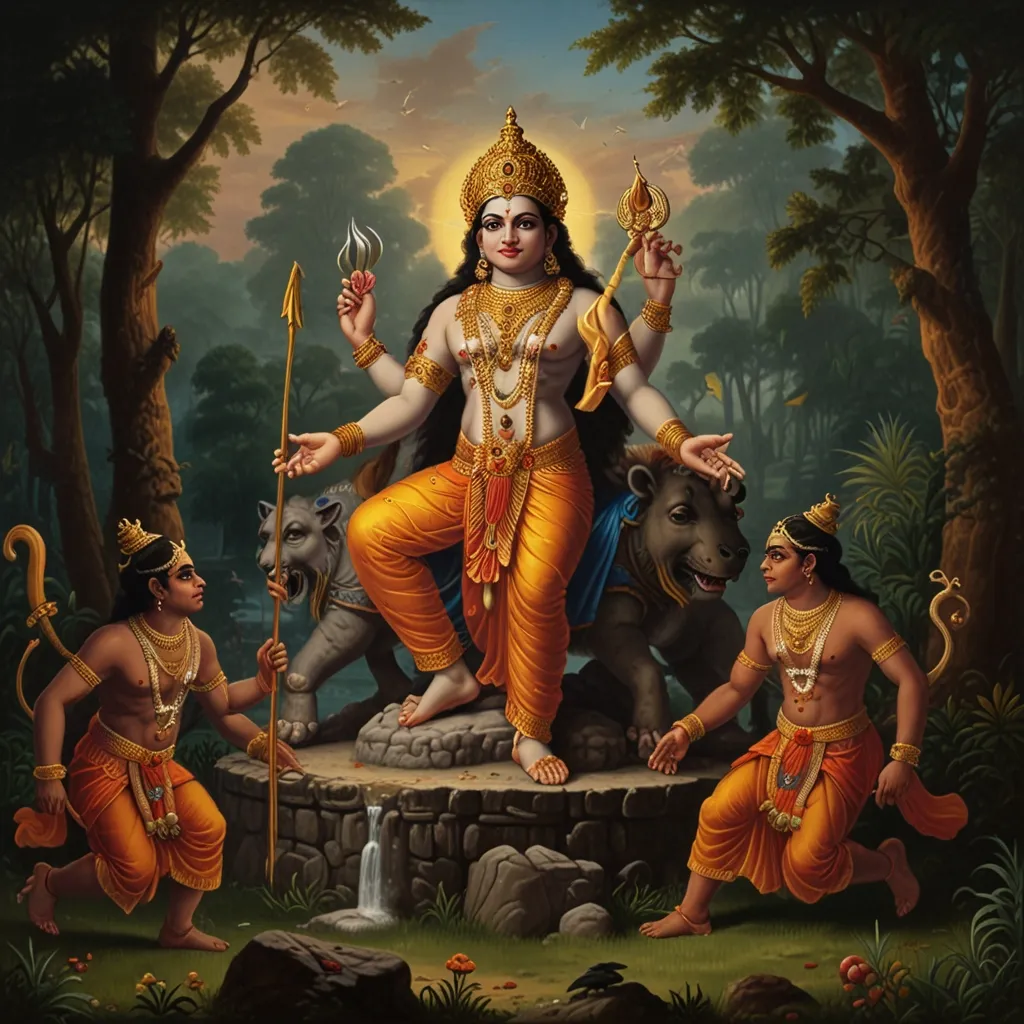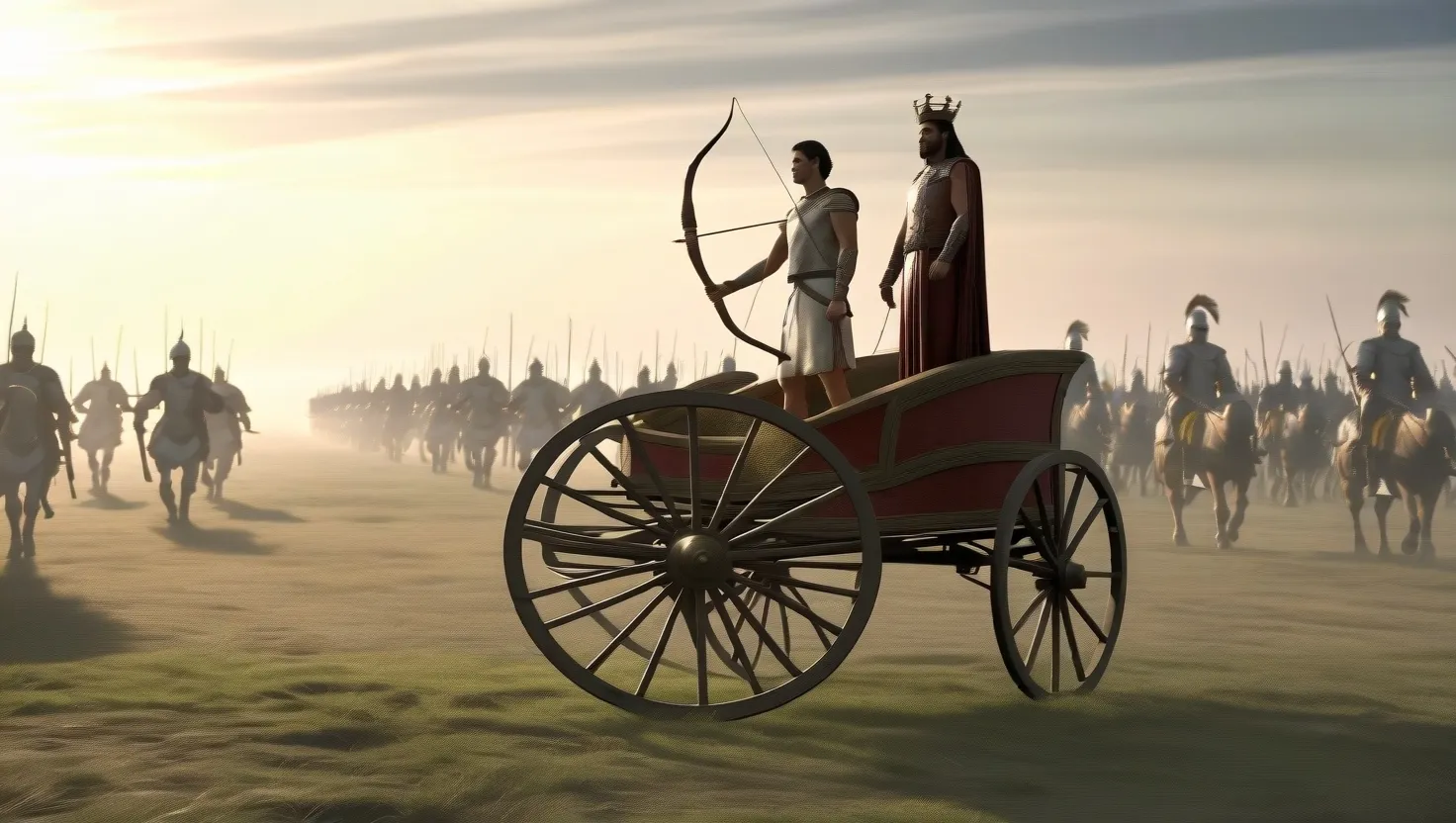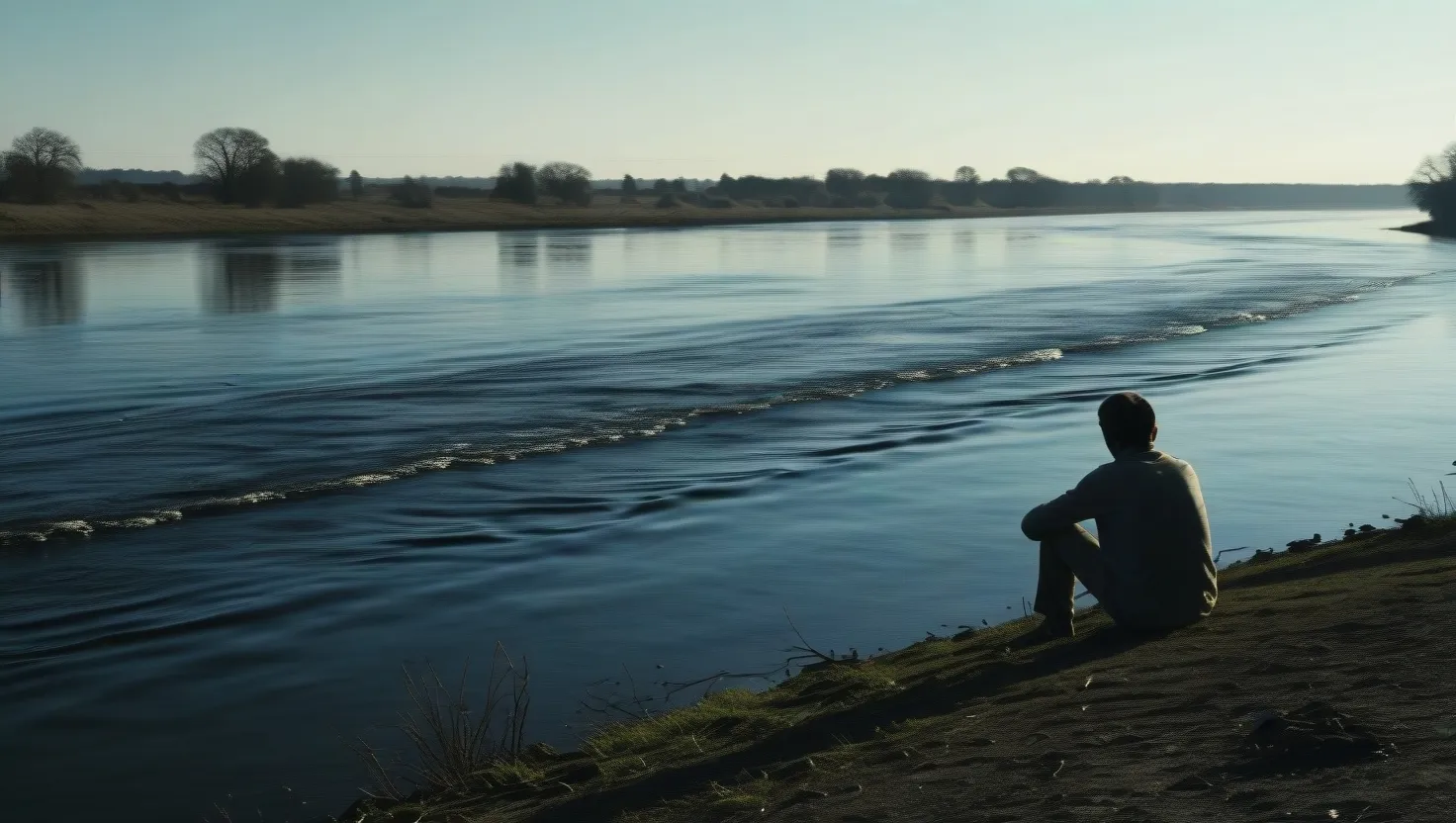Let’s take a journey back to ancient times, to the story of Ayodhya where King Dasaratha ruled. The King had four sons: Rama, Bharata, Lakshmana, and Shatrughna. Rama was the eldest and slated to inherit the throne. But, life threw a twist when Dasaratha’s wife Kaikeyi cashed in on two old promises from the King. She wanted her son Bharata to be crowned king, and Rama to be banished to the forest for 14 years.
Now, Dasaratha, being a man of his word, had no choice but to agree. Rama, the ever-dutiful son, accepted the harsh order without a second thought. His loyal wife, Sita, and his brother, Lakshmana, refused to let him go alone and insisted on joining him. They exchanged their life of luxury for the simplicity and hardship of the forest.
Life in the wilderness was a mixed bag for the trio. They ran into a demoness named Surpanakha, who immediately fancied Rama and tried to woo him. Rama, faithful to Sita, turned her down. Lakshmana, always the protective brother, took it a step further and injured her. Humiliated and furious, Surpanakha hightailed it to her brother Ravana, the mighty demon king of Lanka, painting Sita’s beauty in vivid detail.
Ravana couldn’t resist and hatched a plan to kidnap Sita. Disguised as a wandering holy man, he deceived Sita into stepping out of a protective boundary drawn by Lakshmana. While Rama and Lakshmana were off tracking a golden deer, Ravana whisked Sita away to Lanka.
Rama and Lakshmana started their desperate search for Sita. Along their journey, they met the monkey king Sugriva and his incredible servant, Hanuman. Hanuman, equipped with strength beyond belief and the ability to change size, became their crucial ally. He leaped across the sea to Lanka, found Sita, and comforted her, promising that Rama was coming to her rescue.
But Hanuman’s heroic mission wasn’t smooth sailing. Ravana’s soldiers captured him and even set his tail on fire. Using his wits, Hanuman broke free, setting parts of Lanka ablaze as he made his escape. He returned to Rama, bringing hope and a renewed sense of determination.
Rama, now bolstered by Hanuman’s bravery, rallied an army of monkeys and constructed a massive bridge to Lanka. What followed was an epic battlefield showdown. The fighting was fierce, with heavy casualties on both sides. Eventually, Rama and Ravana squared off in a final duel. Rama emerged victorious, killing Ravana and rescuing Sita at last.
But happiness came with a pinch of bitterness. Rama had doubts about Sita’s chastity after her long stay at Ravana’s palace. Sita, hurt yet resolute, agreed to undergo a trial by fire. Miraculously, she emerged unharmed, proving her innocence once and for all.
Even so, whispers of doubt refused to die down in Ayodhya. Strapped with the responsibility to be a just ruler, Rama bowed to public sentiment and reluctantly banished his beloved Sita to the forest. Broken but resilient, Sita found refuge at the sage Valmiki’s ashram, where she gave birth to twin sons, Lava and Kusa.
Years later, destiny brought the twins back to their father. Their reunion was bittersweet but marked the beginning of a golden era known as Ram Rajya, a period of unmatched peace and prosperity.
The saga of Rama is far more than a tale of myth and legend. It’s a deep dive into loyalty, duty, and the timeless battle between good and evil. The story vividly reminds us of the importance of sticking to one’s Dharma, or duty, even when the road gets rocky. Rama’s journey—from prince to exile, from warrior to king—is a lesson in resilience and virtue, one that continues to inspire generations.






